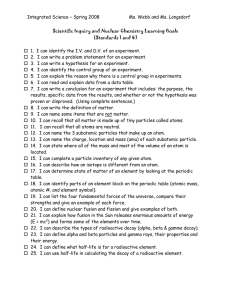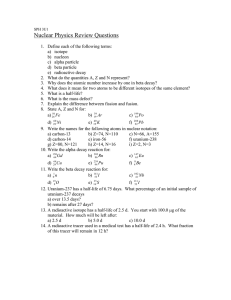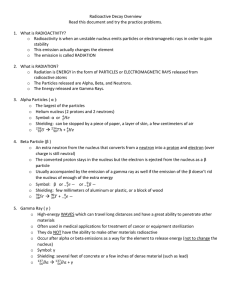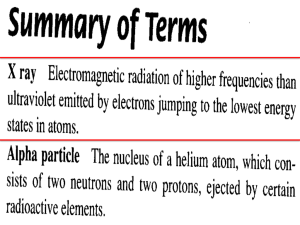Nuclear Review
advertisement
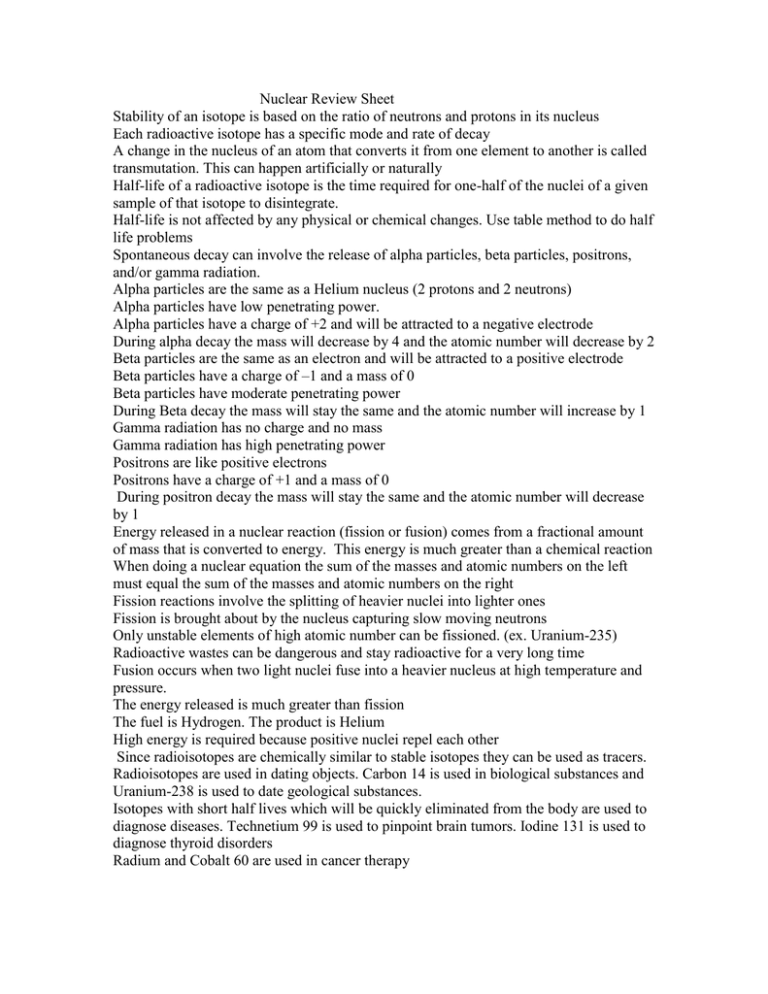
Nuclear Review Sheet Stability of an isotope is based on the ratio of neutrons and protons in its nucleus Each radioactive isotope has a specific mode and rate of decay A change in the nucleus of an atom that converts it from one element to another is called transmutation. This can happen artificially or naturally Half-life of a radioactive isotope is the time required for one-half of the nuclei of a given sample of that isotope to disintegrate. Half-life is not affected by any physical or chemical changes. Use table method to do half life problems Spontaneous decay can involve the release of alpha particles, beta particles, positrons, and/or gamma radiation. Alpha particles are the same as a Helium nucleus (2 protons and 2 neutrons) Alpha particles have low penetrating power. Alpha particles have a charge of +2 and will be attracted to a negative electrode During alpha decay the mass will decrease by 4 and the atomic number will decrease by 2 Beta particles are the same as an electron and will be attracted to a positive electrode Beta particles have a charge of –1 and a mass of 0 Beta particles have moderate penetrating power During Beta decay the mass will stay the same and the atomic number will increase by 1 Gamma radiation has no charge and no mass Gamma radiation has high penetrating power Positrons are like positive electrons Positrons have a charge of +1 and a mass of 0 During positron decay the mass will stay the same and the atomic number will decrease by 1 Energy released in a nuclear reaction (fission or fusion) comes from a fractional amount of mass that is converted to energy. This energy is much greater than a chemical reaction When doing a nuclear equation the sum of the masses and atomic numbers on the left must equal the sum of the masses and atomic numbers on the right Fission reactions involve the splitting of heavier nuclei into lighter ones Fission is brought about by the nucleus capturing slow moving neutrons Only unstable elements of high atomic number can be fissioned. (ex. Uranium-235) Radioactive wastes can be dangerous and stay radioactive for a very long time Fusion occurs when two light nuclei fuse into a heavier nucleus at high temperature and pressure. The energy released is much greater than fission The fuel is Hydrogen. The product is Helium High energy is required because positive nuclei repel each other Since radioisotopes are chemically similar to stable isotopes they can be used as tracers. Radioisotopes are used in dating objects. Carbon 14 is used in biological substances and Uranium-238 is used to date geological substances. Isotopes with short half lives which will be quickly eliminated from the body are used to diagnose diseases. Technetium 99 is used to pinpoint brain tumors. Iodine 131 is used to diagnose thyroid disorders Radium and Cobalt 60 are used in cancer therapy

